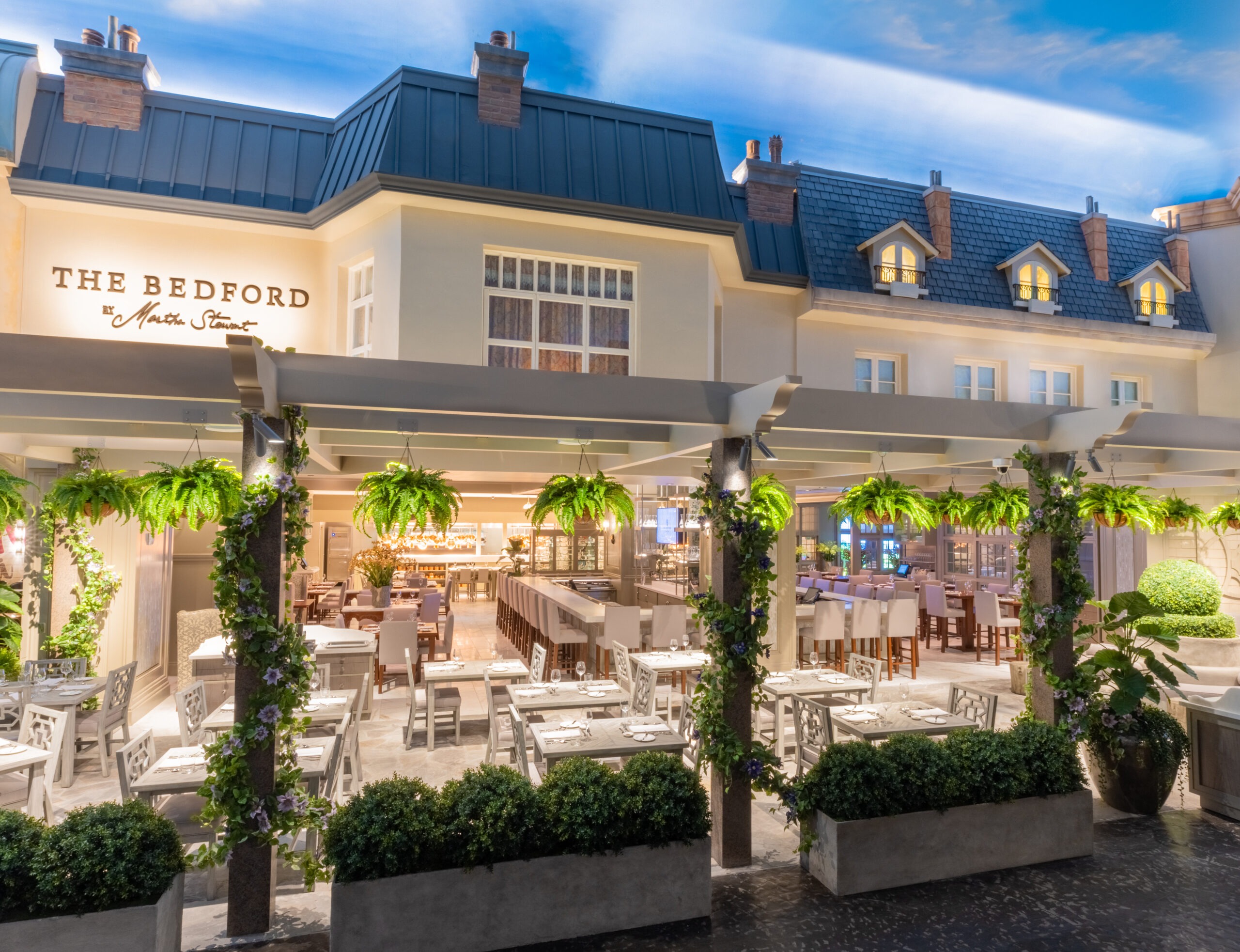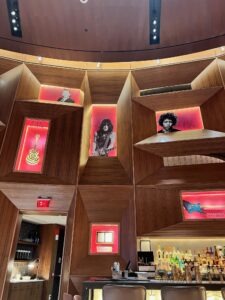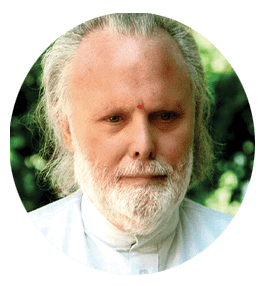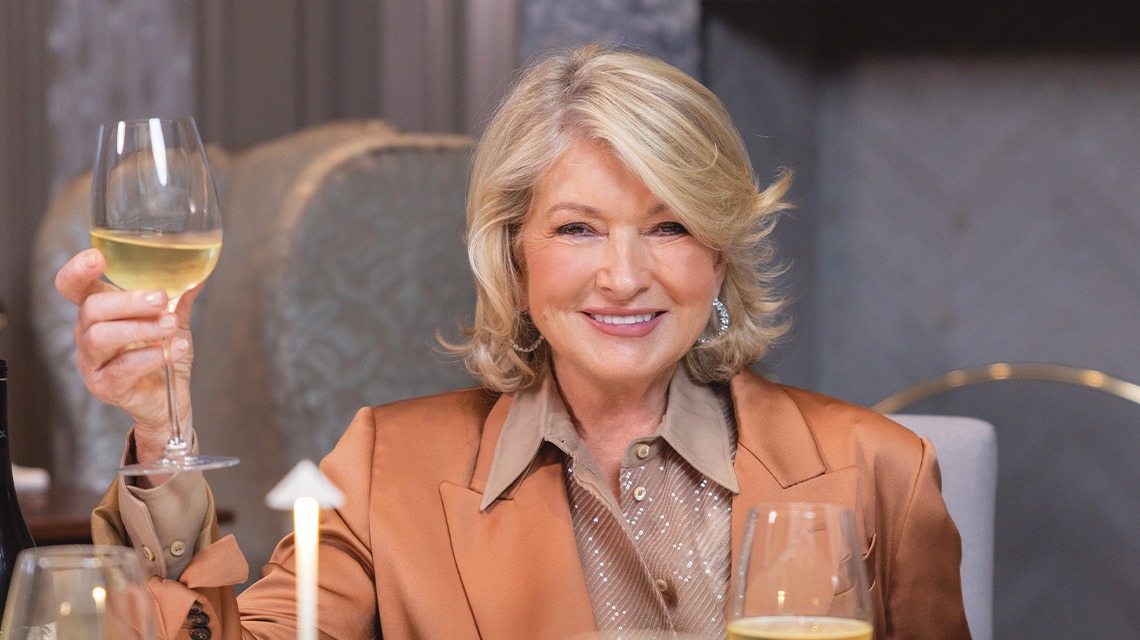Hospitality pioneers still leading the way in their golden years
We love reading stories about young entrepreneurs setting the world on fire with a new idea to deliver hospitality in a new way. Those Millennials and Gen Z-ers give us hope for the future. But they didn’t invent innovation. Pioneers who changed the hospitality landscape decades ago continue reinventing the world and themselves well into their golden years.
They are true superstars worth celebrating.
“As we get older, we build up advantages that can serve us well on the road to mastery,” prizewinning author Adam Gopnik told an interviewer about his new book, “The Real Work.” He should know. At the prime age of 67, Gopnik is still inspiring with fresh takes on how to improve human performance—and in his “late middle age” learned drawing, boxing and driving.
His book’s title refers to the combination of technical virtuosity and empathetic engagement, a pairing that often takes years to achieve. It’s something that people who have put in the time to learn a skill and make friends with their own unique passions and gifts can offer the world in a way those who are just finding themselves may not be able to do. “Our later years truly provide us with the second period of potential accomplishment that can be very satisfying,” as Gopnik puts it.
Call it mature mastery: the combination of experience and personal knowledge, resources and audacity that can lead to true innovation.
Over the last half century, the three innovators celebrated here have continued to share their understanding of what people want and need—as seen through their distinctive lenses on what is possible. Martha Stewart, model, stockbroker, chef, lifestyle mogul, star of “Martha and Snoop’s Potluck Dinner Party,” cover of Sports Illustrated Swimsuit at age 81 and now restaurateur at The Bedford at Paris Las Vegas Hotel and Casino, has always been adept at understanding the zeitgeist of the time and serving up exactly what people need to feel special. We asked her how hospitality has changed over the years and what she is most proud of in her career.
Isaac Tigrett and Peter Morton were two shaggy-haired Americans who wanted a good burger while living in London. They opened an American-style diner in an old Rolls Royce dealership, called it Hard Rock Cafe, and the nostalgia-fueled experience was born, complete with soundtrack.
Tigrett went on to create the House of Blues Foundation, which has reached more than 1 million urban school kids with music and art programs; lived for 15 years in a multi-faith ashram; establish the Rama Foundation, which funded a 500-bed surgical hospital in Andhra Pradesh, India, that has treated 3 million patients; and toured the world promoting a paper on spiritual experiences. He is now 75 years young.
We talked to Danielle Babilino, senior vice president of global sales and marketing, and Giovanni Taliaferro, vice president of memorabilia and design, at Hard Rock International about Tigrett’s legacy.
Orange County, California-born serial entrepreneur and Stanford University alum Chip Conley will turn 63 this month. He has always pursued the dream of living life to its fullest. He founded Joie de Vivre Hospitality in 1987, introducing the boutique lifestyle concept with the accent on local. After 50 hotels and 24 years, he sold the business that eventually made its way to Two Roads Hospitality and now lives on as JdV By Hyatt.
He went on to write books about building businesses driven by our need for meaning, including “The Rebel Rules: Daring to Be Yourself in Business” and his newest work, “Wisdom@Work: The Making of a Modern Elder.” That book aligns with the Modern Elder Academy he founded in 2018, a midlife wisdom school in Mexico’s Baja California. We caught up with him in Toronto at Destinations International Annual Convention 2022 and learned about his take on the importance of “Long Life Learning” and doing.
The Hospitality Influencer: Martha Stewart
Who among us did not learn the existential genius of one-pan pasta and aspire to Hamptons sophistication in the pages of Martha Stewart Living? She was the original lifestyle influencer, starting catering, media and e-commerce companies focused on DYI-refined living.
Even the media event of the federal courtroom where she was convicted in 2004 of lying to the FBI about a stock sale never even slowed down New Jersey-born Martha Kostyra. In fact, it made famous the hand-crocheted poncho she wore on her release.
She says she learned much of her pluck—and craft—from her mother, Big Martha. After marrying Andrew Stewart (a lawyer and book publisher) at age 19, trying her hand as a stockbroker and giving birth to her daughter, Alexis, she published her first book, “Entertaining,” in 1982 and her television show “Martha Stewart Living TV” went into syndication a decade later.
That is where she coined the phrase, “It’s a good thing,” something she boasts she was saying before many of her millions of social media followers were born. In addition to partnerships with cookware and furniture makers, she has an advisory role with marijuana producer Canopy Growth to develop a line of hemp-based cannabidiol-infused products for pets.
When we asked about the highlight of her expansive career, Stewart said, “I am most proud of the evergreen, useful, practical, lovely content that we have created over the last 40 years via my books, television shows, online, Instagram and products. We have had an immense influence over the way the American lifestyle has evolved, and that is a pretty nice legacy.”
This year, Stewart went back to her roots as a model in high school and college to grace the magazine cover for both Sports Illustrated Swimsuit and now for Smart Meetings. In 2013, she told Star Jones, former co-host of “The View,” that she believed in being a life-long learner. “You should never retire—you shouldn’t even use the word,” she said. “There is always something else you can do.”

True to form, this year, Stewart opened The Bedford, her first culinary venture in Las Vegas, at Paris Las Vegas Hotel and Casino. The French-inspired menu is complemented by custom cocktails in elegant surroundings modeled after Stewart’s 1925 farmhouse in Bedford, New York, and can seat up to 194.
“Martha designed the restaurant to feel like one of the dinner parties that she would host in her own home. In fact, it features a replica of Martha’s dining room, called the ‘Brown Room,’ which includes digital screens showing views of the garden in her estate,” says Abby Hobbs, Caesars Entertainment director of sales for Las Vegas.
Read More: Caesars Entertainment Elevates its Las Vegas Properties
Why open a restaurant now? “Why not? The door opened, and I went in,” she told us. “I could not have found a better partner in Las Vegas than Caesars Entertainment. They are a joy to work with. They got what they were looking for, and I got what I was looking for—a beautiful, enchanting restaurant to get away from the noise and enjoy excellent food and drinks.”
The menu highlights dishes that helped boost Stewart’s culinary notoriety. Many include ingredients that are locally sourced. Guests can begin with indulgent starters such as steak tartare with strip loin, oysters Rockefeller with Pernod cream and spinach, or jumbo lump crab cake with roasted yellow peppers and celeriac slaw. A signature item at The Bedford is Big Martha’s Pierogies based on a recipe originally developed by Martha’s mother.
“It’s about having beautiful ideas and executing them.”
– Martha Stewart

The Caesar salad is served family-style tossed and served by a waiter, adding another layer of retro luxury. “The table-side presentations are part of the integrity of the dishes and how Martha presents them at her home. These unique presentations further elevate the dining experience by allowing guests to witness several of Martha’s legendary techniques first-hand,” Hobbs says.
The restaurant, like all of Stewart’s endeavors, reflects her classic sensibilities and an understanding of how people live today. We asked her how cultural attitudes around what it means to be hospitable and welcoming have changed in the last 40 years, and she emphasized the importance of being considerate of guest expectations. “Much less is expected of a hostess nowadays. Formality has turned into a much more casual attitude. That does not mean that you are not inclusive of all your guests and not helpful and engaging, but it’s much more casual. The formal table setup has given way to more casual buffets, simple service and fewer courses. People have really agreed all together that things have to be more casual.”
As the world has changed, so has her role as an influencer. “I was influential in creating content with the printed page, then in television, then with the internet, and that opened into the explosion of social media, which offers a platform to reach billions of people worldwide. That never could have happened 10 years ago, which is exciting. The medium has to be used with care and direction. It is an excellent way to reach an audience and influence,” Stewart says.
Her message for hospitality veterans looking to continue to grow and contribute was similarly simple, practical and gracious. “I think a lot of people are interested in hospitality. A lot of people want to open a hotel or restaurant. It’s a crowded, difficult field. It’s hard to find dedicated staff to run these operations, but you can, and if you can create an appealing atmosphere, you can make a lot of money, have a lot of fun and your guests and customers can have a lot of fun. It’s about having beautiful ideas and executing them.”
The Heartfelt Legend: Isaac Burton Tigrett
Jackson, Tennessee-born Isaac Burton Tigrett was 22 when he opened the original London Hard Rock Cafe in 1971 alongside pal Peter Morton. He continued to expand the franchise and in 1995 opened the first hotel, Hard Rock Hotel and Casino in Las Vegas (now Virgin Hotels Las Vegas).
“It really was revolutionary because it was a place where everyone had to enter through the same doors to be treated the same way,” says Danielle Babilino, senior vice president of global sales and marketing at Hard Rock International. “It didn’t matter what status you had; they wanted a place where everyone was treated equally. We still manage by the mantra: ‘Love all, serve all, take time to be kind, all as one and save the planet.’ Employees are hired for their heart and trained in a program called Walk This Way to embrace the authentic, servant culture of the brand.”
To that end, while music is the heart of Hard Rock properties, philanthropy is the soul, Babilino says. Hard Rock Heals Foundation is a global charity that builds on the “Love.Amplified” motto to provide grants to health and wellness, disaster relief and humanitarian causes around the world. Even the memorabilia often comes with a philanthropic chord—Hard Rock has been known to donate to an artist’s favorite charity when they accept the gift. “We feel a responsibility to support our communities,” she says.

The product was also unique in its physical conception. The design is contemporary and energetic and rooted in music and entertainment. It’s a formula that still resonates today. “Coming out of Covid, our customers want an emotional connection. They want to fall in love with the brand; they don’t want it to be transactional. It has to be authentic and real. It is a reprieve from the traditional, predictable, cookie-cutter experience,” says Babilino.
“It really was revolutionary because it was a place where everyone had to enter through the same doors to be treated the same way.”
– Danielle Babilino
The approach to featuring the more than 7,000 pieces of diverse music memorabilia in the collection has evolved from those early days, explains Giovanni Taliaferro, vice president of memorabilia and design at Hard Rock International. Instead of a “stack and pack” attempt to fill every inch of wall space with random rock guitars, funk icon costumes, classical scores and photos of country music legends, the presentation has been scaled back to tell a story of the specific place and the museum-quality artifacts that speak to visitors there.
“This isn’t decor on our walls, these are authentic moments of music history,” Taliaferro says.

His favorite piece in the collection?? It’s John Lennon’s handwritten lyrics to “Imagine” because of the time and place it transports him back to. His mother would play that song when she was dusting and straightening. He hopes every piece on every Hard Rock wall inspires the same time traveling time traveling for visiting guests.
What has also evolved is the focus on leveraging the unique energy of the space for groups getting business done, whether it is for team building with docent tours of the collection or conferences in the generous, bespoke meeting spaces at some of the properties. “We have something for everyone, and we are very inclusive,” Babilino says.
By the time Tigrett eventually sold his shares, the brand was well on its way to 270 cafes, hotels, casinos and live music venues in 70 cities across the world. Forbes estimates the Hard Rock International business employed 40,000 people and realized revenues of $5.2 billion in 2022.
Since 2007, the Hard Rock phenomenon has been steered by the Seminole Native American Indian Nation of Florida, which is still rapidly expanding its footprint and serving hundreds of thousands of fans globally each day.
In a cyclical move, Seminole Nation recently announced it is coming back to Las Vegas and will open a guitar-shaped hotel on The Strip on the site of The Mirage in 2025. “We are excited that this flagship property will be part of a new chapter for the city,” says Babilino. “I predict that every image of Las Vegas will feature the iconic guitar.”
Even after stepping down from his chair of the public company, Tigrett was not done shaking up the hospitality world. After a short interim of public service activities, he launched International House of Blues Entertainment Company in 1992 with Disney, Harvard University’s Endowment Fund, Chase Manhattan Bank’s Venture Capital Group, actor Dan Aykroyd and the rock group Aerosmith. The music and meeting venue enterprise expanded rapidly from the original location on Harvard Square in in Cambridge, Massachusetts, to New Orleans’ French Quarter, Hollywood’s Sunset Strip, Chicago’s iconic Marina City, Disneyworld in Orlando and Myrtle Beach, South Carolina.

On his official website, Tigrett calls Hard Rock “a celebration of culture, a love of music and the musicians that create it.” House of Blues “created culture” by featuring rock, R&B, urban, gospel blues and world music live and through its radio shows and record label.
He went on to say, “Hard Rock and House of Blues were born out of the ideals of the Peace and Love Revolution of the 1960s.” Their proclaimed mission: “To create a profitable, principled global entertainment company celebrating the diversity and unity of world cultures through music and art. Promoting racial and spiritual harmony through love, peace, truth, righteousness and non-violence.”
Tigrett eventually stepped down as CEO of House of Blues to pursue a calling for social outreach activities in India. The House of Blues continued to expand in the United States and is now owned by Live Nation.
Tigrett is the original benefactor of the Freedom Award at the National Civil Rights Museum in Memphis, an honor he has personally presented to Bishop Desmond Tutu and President Jimmy Carter.
He speaks on “Ethics in Business” and “Global Branding” at the Massachusetts Institute of Technology, the Young Presidents International Organization, Emory University and the Global Forum of Spiritual and Parliamentarian Leaders. After living the last 15 years in the multi-faith Indian ashram of Prashanti Nilayam, Tigrett returned to this country this country in preparation for a paper on “Material & Spiritual World Experiences.”
The Boutique Innovator: Chip Conley
 In 1987, the year “I’ve Had the Time of My Life” topped the pop charts, 26-year-old Chip Conley made his own high-profile leap to hotelier fame and added the term “lifestyle hotel” to the hospitality lexicon. He combined the small, stylish “boutique” style Ian Shrager made popular at Morgans Hotel in New York City with the power of a brand promoting Joy of Life or Joie de Vivre, starting with the renovation of Phoenix Hotel in San Francisco’s Tenderloin neighborhood.
In 1987, the year “I’ve Had the Time of My Life” topped the pop charts, 26-year-old Chip Conley made his own high-profile leap to hotelier fame and added the term “lifestyle hotel” to the hospitality lexicon. He combined the small, stylish “boutique” style Ian Shrager made popular at Morgans Hotel in New York City with the power of a brand promoting Joy of Life or Joie de Vivre, starting with the renovation of Phoenix Hotel in San Francisco’s Tenderloin neighborhood.
The Stanford graduate offered free massages to band tour managers to get big-name acts to stay the night. Soon, he was buying other properties in the Bay Area and renovating them to fit different psychographic personas—mariner-themed Jack London Square Waterfront Hotel in Oakland, businessperson chic at Hotel Vitale (now 1 Hotel San Francisco) and mid-century hip in Pacific Heights.
In his 2007 book, “Peak: How Great Companies Get Their Mojo from Maslow,” Conley described how he set out to create a self-actualized company based on the famous hierarchy of needs. He realized that if he could give guests, employees (starting with housekeepers) and investors a sense of meaning, he could create loyalty. “The goal I set for myself was to create a workplace where I could not only seek joy from the day-to-day activities of my career, but also help create it for both my employees and customers,” he proclaimed.
Read More: Boutique Hotels Riding Mid-Size Meeting Wave
It turned out a fun local experience was the one thing travelers couldn’t get enough of. After a hiccup in 2001 when 9/11 and the dot com crash taught Conley the lesson of diversifying, he grew the concept to more than 30 hotels before selling a major stake in 2010. The brand is now part of Hyatt and has expanded beyond the base in California.
He wrote a few more books, “The Rebel Rules: Daring to Be Yourself in Business,” “Marketing that Matters: 10 Practices to Profit Your Business and Change the World” and “Emotional Equations: Simple Truths for Creating Happiness + Success in Business + in Life.”
Conley went on to serve as head of global hospitality and strategy for then-fledgling Airbnb and later as a strategic advisor to the short-term home rental company. He joked later about that experience at that Destinations International gathering we attended that he didn’t write code like his 20-something Airbnb colleagues and the CEO was young enough to be his son. He didn’t even have a ridesharing app on his phone. But they still valued his insight.
By 2018, he was embracing his “mature master” role. He wrote “Wisdom@Work: The Making of a Modern Elder” to share the secret for thriving as a midlife worker: learning to marry wisdom and experience with curiosity, a beginner’s mind, and a willingness to evolve, all hallmarks of the modern elder. “Companies are finally waking up to the value of the humility, emotional intelligence and wisdom that come with age. And while digital skills might have only the shelf life of the latest fad or gadget, the human skills that mid-career workers possess—like good judgment, specialized knowledge and the ability to collaborate and coach—never expire,” he wrote.

The same year, he founded the Modern Elder Academy, which he described as the world’s first “midlife wisdom school” in Baja California Sur. The 3-acre oceanfront campus is dedicated to helping students reimagine midlife as a time for learning, growth and positive transformation through immersive workshops, sabbaticals and digital programs.
Modern Elder Academy focuses on “long-life learning” and is a mission-driven organization committed to socio-economic diversity, having provided scholarships to half of its 2,000 alumni. Graduates receive a certificate in Mindset Management.
“Companies are finally waking up to the value of the humility, emotional intelligence and wisdom that come with age.”
– Chip Conley
Now he has his sights set on creating a new generation of retirement housing he calls “regenerative communities,” where an “alchemy of curiosity and wisdom flourishes,” starting with Saddleback Ranch in Northern New Mexico. Instead of a golf course, they will be oriented around a farm or ranch. Activities will focus on helping people make the rite of passage to “middlescence” between the ages between 45 and 60.
“A modern elder is as curious as they are wise, and we want to be part of the larger conversation,” he says. In a world that is short of qualified workers, ageism hurts everyone. When age is treated as any other type of diversity, a whole world of skills opens up to businesses and workers. That is why he is focused on building resources to help these still-vibrant contributors regenerate and expand their influence.
Conley sees this latest venture as an opportunity to embrace wisdom as a path to growing whole—not old.
Knowledge is the Power of Experience
English philosopher and statesman English philosopher and statesmen Sir Francis Bacon famously said, famously said “knowledge is power.” For O.G. (Original Gangster) meeting planners who have worked in the meeting industry for some time, knowledge is the power of experience.
As new, eager and wide-eyed meeting planners enter the industry and bring a wide range of new technologies and ideas, it is important to remember that the community of seasoned planners who offer can balance the exuberance of youth with an unmatched wealth of their own.
As she approached her 60s, Donna Kastner noticed that the meetings industry was starting to focus on engaging the younger generation. This motivated her to found Retirepreneur, an organization focused on working with individuals with deep experience with deep experience who are still interested in working in the industry.
Kastner herself has very little interest in slowing down, with “too young to be done,” as her personal mantra. “As long as I’ve got a brain and some Wi-Fi, I think I’ll always be doing something,” she says.
Looking back to her younger years, Kastner wishes her own self-awareness had been more developed, but thinks this often comes only with the march of time. “Now I’m unafraid. I don’t know if that just comes with being older, but here’s who I am. This is what I know I do well and P.S., here’s a few things I don’t do [well].”
Kastner recalls her father warning her against being a “jack of all trades and master of none.” Yet now she sees mastery in a different light. “I’m not a master of all by any stretch, but the mastery I’ve achieved, and not even just self-mastery, is knowing where to go for answers,” she says. “It’s helped me to kind of connect the dots at a higher level.”
For the younger generation of meeting planners, Kastner has some advice on networking and the importance of talking to people who aren’t like yourself. “Build a network that is very rich and diverse,” she advises. “Be curious about people not like you and listen and ask questions. I think sometimes we were afraid to ask questions because we’re supposed to know that.”
Her work with Retirepreneur has taught her that many so-called seniors want to stay engaged. “When you love what you do, think about how you about ways you can still help those in your industry. Explore it. There’s a lot of pathways.”
In regard to bridging the generational gap, Kastner thinks more can be done, “Events need to be more purposeful in how they design these multi-generational exchanges because they can be awkward at first,” she continues. “Cross-generational conversations take some design and some nurturing and then once you get them going that way, they’re going to take off on their own.”
–Eming Piansay
This article appears in the October/September 2023 issue. You can subscribe to the magazine here.




